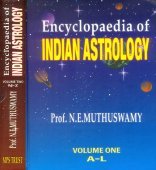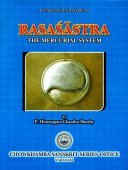Space: 1 definition
Introduction:
Space means something in Hinduism, Sanskrit. If you want to know the exact meaning, history, etymology or English translation of this term then check out the descriptions on this page. Add your comment or reference to a book if you want to contribute to this summary article.
Images (photo gallery)
(+1 more images available)
In Hinduism
Yoga (school of philosophy)
Source: ORA: Amanaska (king of all yogas): A Critical Edition and Annotated Translation by Jason Birch(That which is) Space is denoted by the Sanskrit term Ākāśa (as opposed to Anākāśa—‘spaceless’), according to the Bṛhadāraṇyikopaniṣat 3.8.6.—Accordingly, while describing the absolute nature of Brahma: “Gārgi said, ‘Yājñavalkya, that which is above the sky, below the earth, between the two and called [past, present and future], is stitched and cross-stitched in what?’ Yājñavalkya said, ‘Gārgi, the Brahmins call that very [thing] the imperishable one. [e.g., It is spaceless (anākāśa) [...]’”.

Yoga is originally considered a branch of Hindu philosophy (astika), but both ancient and modern Yoga combine the physical, mental and spiritual. Yoga teaches various physical techniques also known as āsanas (postures), used for various purposes (eg., meditation, contemplation, relaxation).
See also (Relevant definitions)
Starts with: Ether element, Spaceless.
Ends with: Ether element, Inner space.
Full-text (+2694): Akasha, Antarala, Avakasa, Abhyantara, Dirgha, Pradesha, Apasalavi, Akasadhatu, Akashanantyayatana, Kha, Loka, Samghata, Apavaraka, Varas, Vyavadhana, Gamvadari, Upamana, Upashalya, Urukrit, Rocana.
Relevant text
Search found 420 books and stories containing Space; (plurals include: Spaces). You can also click to the full overview containing English textual excerpts. Below are direct links for the most relevant articles:
Mandukya Upanishad (by Kenneth Jaques)
The Vipassana Dipani (by Mahathera Ledi Sayadaw)
Brahma Sutras (Shankaracharya) (by George Thibaut)
II, 3, 3 < [Second Adhyāya, Third Pāda]
I, 3, 7 < [First Adhyāya, Third Pāda]
I, 1, 5 < [First Adhyāya, First Pāda]
Vaisheshika-sutra with Commentary (by Nandalal Sinha)
Sūtra 7.1.24 (Space is all-pervading) < [Chapter 1 - Of Colour, Taste, Smell, and Touch, and Magnitude]
Sūtra 3.2.19 (Unity of Soul, an an objection) < [Chapter 2 - Of the Inference of Soul and Mind]
Sūtra 2.2.12 (Like Existence, Space is one) < [Chapter 2 - Of the Five Bhūtas, Time, and Space]
Bhagavati-sutra (Viyaha-pannatti) (by K. C. Lalwani)
Part 1 - On delusion of faith < [Chapter 3]
Part 3 - Nine questions on karma bondage < [Chapter 1]
Part 4 - On liberation at the exhaustion of karma < [Chapter 4]
Vernacular architecture of Assam (by Nabajit Deka)
Development (c): Aryan Influence < [Chapter 3]
Introduction (history and definition of vernacular architecture) < [Chapter 1]
Folklore, Culture, and Vernacular Architecture < [Chapter 9]
Related products
(+10 more products available)











